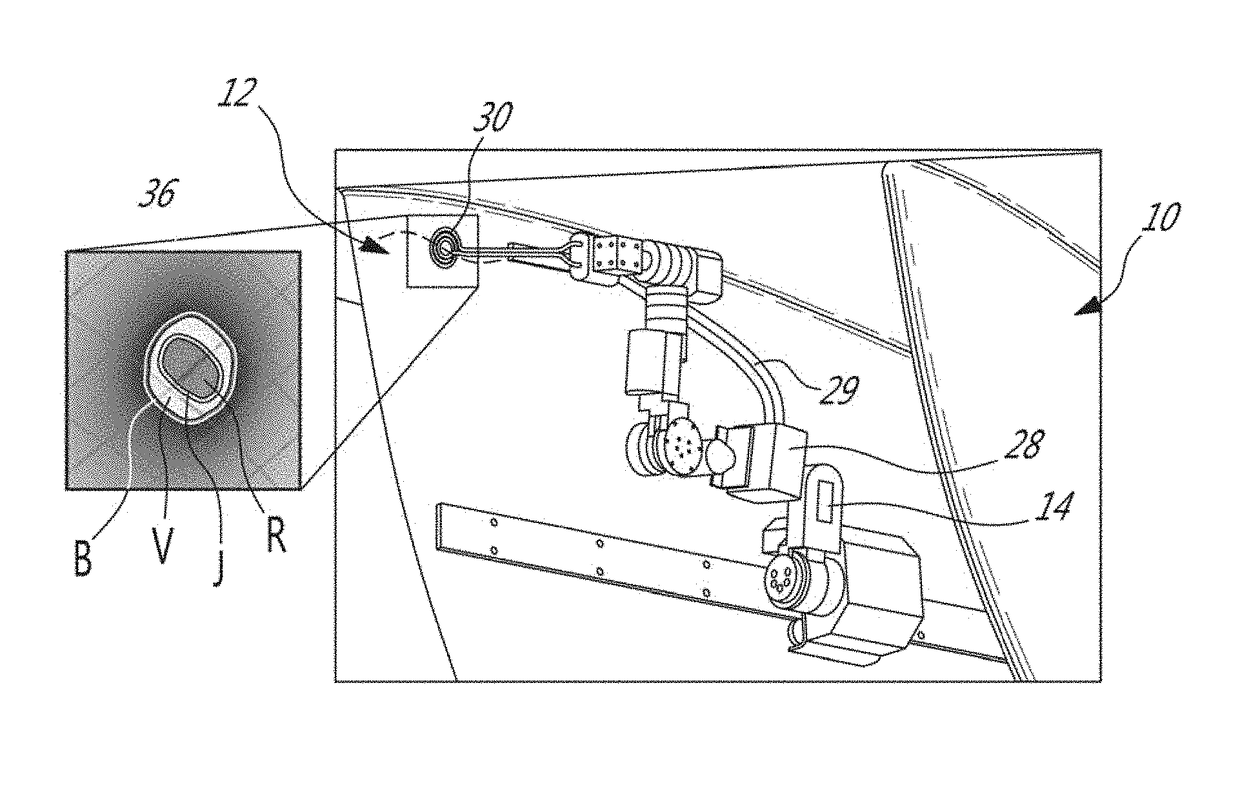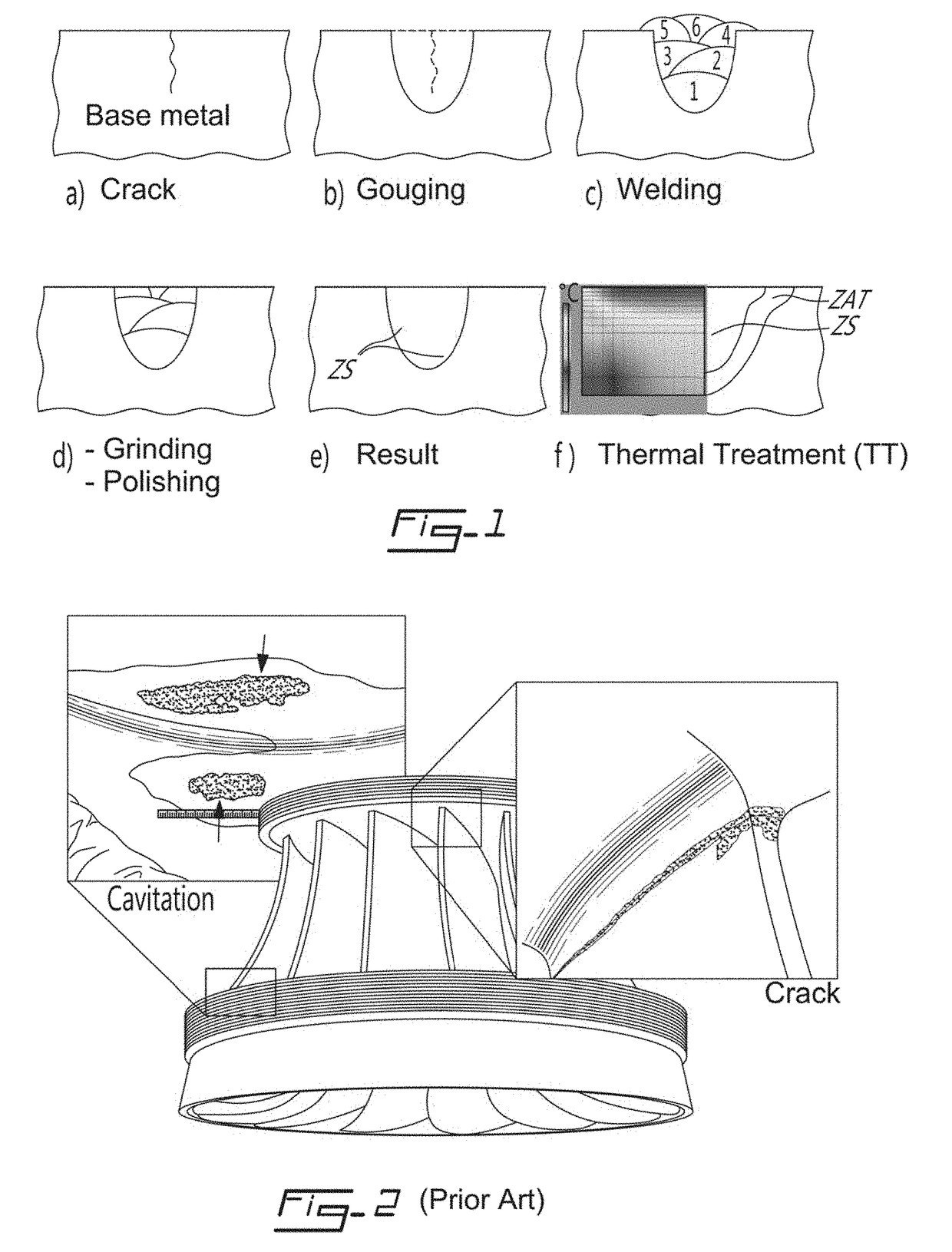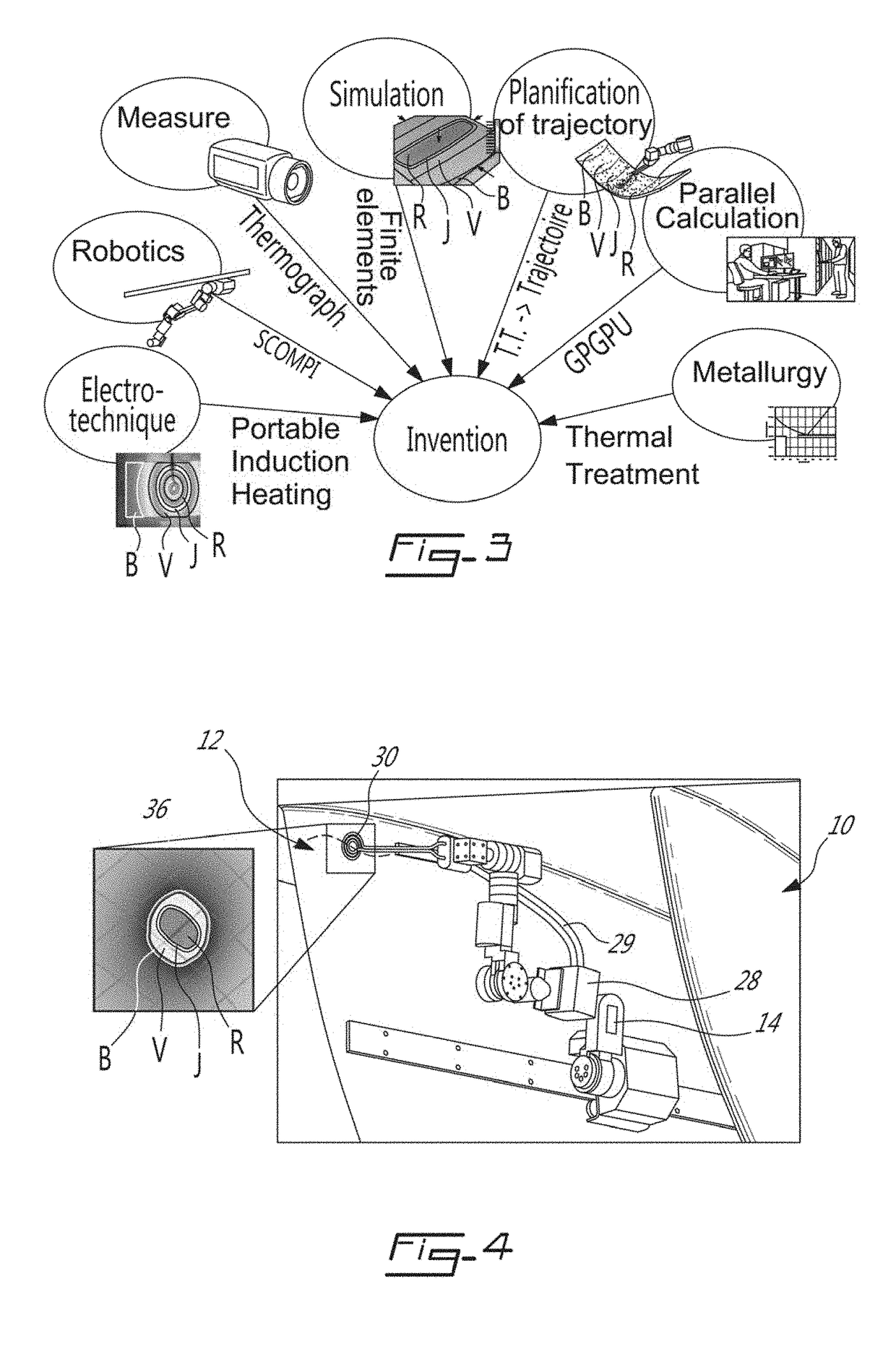System and method for robotic thermal treatment by heat induction
- Summary
- Abstract
- Description
- Claims
- Application Information
AI Technical Summary
Benefits of technology
Problems solved by technology
Method used
Image
Examples
Embodiment Construction
[0045]Referring to FIG. 1, there is illustrated the steps of repair of a crack in a base piece of metal, according to a preferred embodiment of the present invention. The repair comprises the following steps of: a) detecting a crack; b) performing a gouging and / or machining around the crack; c) welding after the gouging and / or machining; d) grinding and / or polishing after the welding; e) inspecting the result of the welded zone (ZS); f) performing a thermal treatment of the welded zone (ZS) that extends to a heat affected zone (ZAT) if necessary. A thermal treatment (TT) may be performed manually using a heater or a torch. However, the inventors have found that it is extremely difficult, if not impossible, to maintain a relatively uniform heating temperature across the entire surface of the welded zone (ZS) manually.
[0046]Referring to FIG. 4, a robotic system 10 is shown for the thermal treatment of a weld zone 12, according to a preferred embodiment of the invention. The system inc...
PUM
| Property | Measurement | Unit |
|---|---|---|
| Temperature | aaaaa | aaaaa |
| Power | aaaaa | aaaaa |
| Speed | aaaaa | aaaaa |
Abstract
Description
Claims
Application Information
 Login to View More
Login to View More - R&D
- Intellectual Property
- Life Sciences
- Materials
- Tech Scout
- Unparalleled Data Quality
- Higher Quality Content
- 60% Fewer Hallucinations
Browse by: Latest US Patents, China's latest patents, Technical Efficacy Thesaurus, Application Domain, Technology Topic, Popular Technical Reports.
© 2025 PatSnap. All rights reserved.Legal|Privacy policy|Modern Slavery Act Transparency Statement|Sitemap|About US| Contact US: help@patsnap.com



